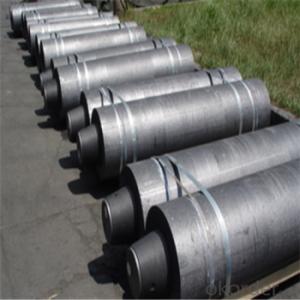When we talk about the backbone of industrial furnaces, there’s one material that stands out – Graphite Electrode Rods. These aren’t just any ordinary rods; they’re the unsung heroes of the metallurgical world. Imagine a world without them – it would be a lot less productive, to say the least.
Graphite Electrode Rods are the heart and soul of electric arc furnaces (EAFs). They’re the ones that carry the electric current to melt the scrap metal, and without them, the whole process would come to a screeching halt. But what makes these rods so special? Let’s dive into their world and find out.
First off, graphite is an allotrope of carbon, which means it’s made up of the same stuff as diamonds, but in a different arrangement. It’s this unique structure that gives graphite its incredible properties. It’s super resistant to heat, which is essential for its role in furnaces. It can handle temperatures of up to 3,000 degrees Celsius (5,432 degrees Fahrenheit) without breaking a sweat. That’s hotter than the surface of the sun!
But it’s not just about heat resistance. Graphite Electrode Rods are also incredibly conductive. This means they can transfer electricity efficiently, which is crucial for the operation of EAFs. They’re like the power lines of the furnace world, ensuring that the current flows smoothly and effectively.
Another thing that sets these rods apart is their strength. They’re made to last, even in the harshest conditions. The manufacturing process involves baking the graphite at high temperatures to increase its density and durability. This makes the rods strong enough to withstand the immense forces generated during the melting process.
Now, let’s talk about the different types of Graphite Electrode Rods. There are three main categories: standard, high power, and ultra-high power. Each type is designed for specific applications and has its own unique properties.
Standard rods are the workhorses of the industry. They’re reliable and cost-effective, making them a popular choice for many furnace operators. High power rods, on the other hand, are made for more demanding applications. They have a higher density and are capable of withstanding higher temperatures and currents. And then there’s the ultra-high power rods, the cream of the crop. These are the top-tier rods, designed for the most intense furnaces and capable of delivering the best performance.
But what happens when these rods wear out? Well, they don’t just disappear into thin air. They’re recycled, which is a testament to the sustainability of the industry. The used rods are crushed and processed to remove impurities, and then they’re mixed with new graphite to create new electrodes. It’s a cycle of reuse and rebirth, ensuring that these vital components continue to serve the industry for years to come.
The production of Graphite Electrode Rods is a complex process that requires precision and expertise. It starts with the selection of high-quality raw materials, which are then mixed and heated to form the initial structure of the rod. The next step is the baking process, where the rod is heated to extreme temperatures to increase its density and strength. After that, the rod undergoes a series of inspections and quality checks to ensure that it meets the strict standards of the industry.
One might wonder about the future of Graphite Electrode Rods. With the growing demand for steel and the increasing focus on sustainability, these rods are more important than ever. As the world continues to evolve and new technologies emerge, the role of Graphite Electrode Rods in the industrial furnaces is only set to grow. They’re not just a part of the process; they’re the driving force behind it.
In conclusion, Graphite Electrode Rods are the unsung heroes of the industrial furnaces. They’re the silent workhorses that power our world, and without them, our modern society would not be possible. So next time you see a furnace in action, take a moment to appreciate the Graphite Electrode Rods that make it all happen.

